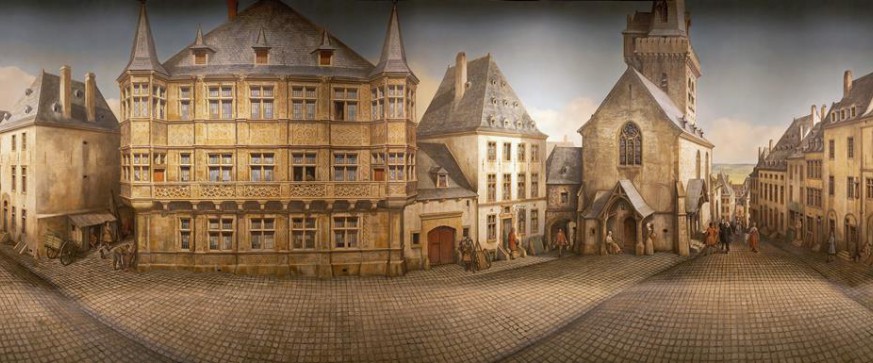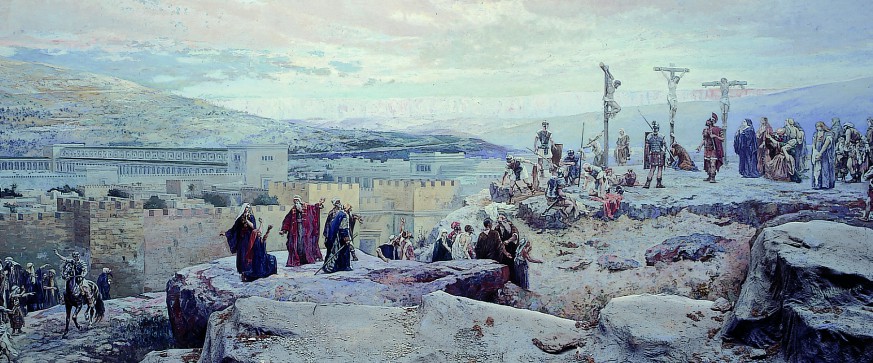The word diorama can either refer to a nineteenth-century mobile theatre device, or, in modern usage, a three-dimensional full-size or miniature model, sometimes enclosed in a glass showcase for a museum (habitat dioramas).
Diorama by Daguerre and Bouton
The Diorama was a popular entertainment that originated in Paris in 1822. An alternative to the panorama, the Diorama was a theatrical experience viewed by an audience in a highly specialized theatre. As many as 350 patrons would file in to view a landscape painting that would change its appearance both subtly and dramatically. Most would stand, though limited seating was provided. The show lasted 10 to 15 minutes, after which time the entire audience (on a massive turntable) would rotate to view a second painting. Later models of the Diorama theater even held a third painting.
The Diorama: some images compiled by R. Derek Wood
DIORAMANEA is a 1 : 8 scale model project of an original Diorama
Large-scale Diorama
In 19th century a derivative of the panorama was established. Such large scale dioramas were not 360° panorama paintings but reduced versions with an angle of 90 to 150°. Typically, these displays use a tilted plane to represent what would otherwise be a level surface, incorporate a painted background of distant objects, and often employ false perspective, carefully modifying the scale of objects placed on the plane to reinforce the illusion through depth perception in which objects of identical real-world size placed farther from the observer appear smaller than those closer. Often the distant painted background or sky will be painted upon a continuous curved surface so that the viewer is not distracted by corners, seams, or edges.

.jpg)

.jpg)
.jpg)
.jpg)
.jpg)


.jpg)
.jpg)






.jpg)
.jpg)
.jpg)